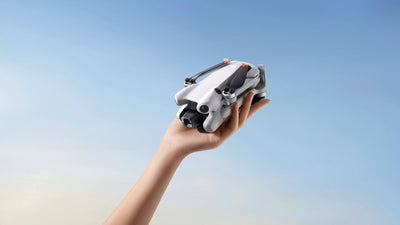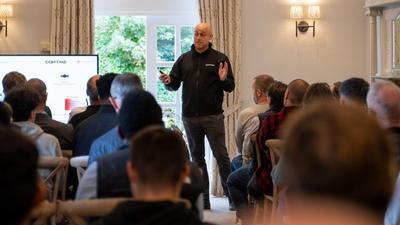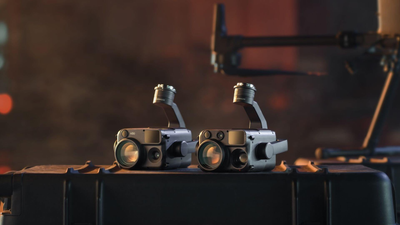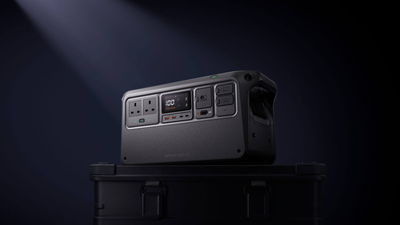RTK vs GPS: Which Drone Positioning System Is Better?
- by Stefan Gandhi
In the fast-evolving world of commercial drone operations, positioning accuracy can make or break a mission. Whether surveying, inspecting or mapping, drone pilots rely on pinpoint location data to ensure deliverables are trustworthy and repeatable. Two dominant systems power this capability: standard GPS and Real-Time Kinematic (RTK). But which is better for your professional operations? The answer depends on your application, required precision and workflow expectations.
Understanding the Basics
GPS, or Global Positioning System, is the backbone of most drone navigation. It uses signals from satellites to triangulate a drone’s position on Earth, generally providing accuracy within two to five metres. For many recreational and entry-level commercial uses, this level of accuracy suffices. However, as the demand for precision in industries like construction, mining, agriculture and surveying intensifies, GPS begins to show its limitations.
RTK, on the other hand, is a step-change in positioning performance. It refines satellite-based data in real time, using a fixed base station to transmit correction data to the drone. This method slashes positional errors to centimetre-level precision, transforming how professionals approach data capture.
Accuracy That Translates to Value
For many professional users, accuracy is currency. Survey-grade drones equipped with RTK can produce ground control point-free maps with sub-5cm absolute accuracy. This drastically reduces the need for manual checkpoints, accelerates data processing and increases overall efficiency. While traditional GPS requires more post-processing and verification, RTK delivers near-instant usable outputs.
In fields like land surveying, asset inspection and volumetric measurement, this precision matters. Over time, the operational time saved and rework avoided can significantly offset the higher upfront cost of RTK-equipped systems.
Real-Time Correction vs General Navigation
RTK is not just about higher accuracy. It is also about reliability in environments where satellite signals may be obstructed or degraded. Construction sites, urban zones and industrial areas often suffer from multi-path interference and poor satellite visibility. RTK helps counteract these issues by anchoring the drone’s data to a known terrestrial reference.
Standard GPS can drift, especially in challenging environments. This is not always a problem when general positioning is the goal. But when a centimetre off means costly rework or safety risk, that drift becomes a liability. RTK provides a far more robust solution for professional-grade missions.
Integration and Compatibility
Deploying RTK does introduce added complexity. Pilots must manage base stations, network configurations and occasional connection issues. Not all drone platforms support RTK, and even those that do require careful calibration and understanding of coordinate systems.
That said, many professional platforms now offer plug-and-play RTK modules, streamlining setup and operation. DJI, Parrot and other commercial leaders are integrating RTK into more of their enterprise lines, reducing the barrier to entry. With proper training, drone teams can quickly embed RTK into standard workflows without disruption.
GPS still holds value in simpler applications. For photography, roof inspections or casual mapping, the added RTK infrastructure may be overkill. But for industries where data fidelity is critical, GPS alone may not meet the rising standard of deliverable quality.
Regulatory and Compliance Considerations
Operating in the UK under CAA regulations means staying within defined airspace, respecting operational authorisations, and ensuring safety standards are met. RTK's precision can aid compliance by reducing flight path errors and ensuring missions stick within legal boundaries.
Moreover, for those pursuing Operational Authorisation under the Specific Category, demonstrating the use of advanced positioning technologies like RTK may strengthen an application. It underscores a commitment to safe, professional practices and mitigates navigational risks.
Cost vs Benefit Analysis
One of the primary concerns professionals have when considering RTK is cost. RTK-enabled drones typically carry a higher price tag and may require ongoing investment in subscriptions or base station infrastructure. However, when evaluated against the man-hours saved, increased deliverable quality and reduced need for rework, the long-term ROI often favours RTK.
GPS drones may appeal to those starting out or working on low-precision tasks. They offer a lower barrier to entry and fewer operational headaches. But as business demands scale, many teams find themselves migrating to RTK-equipped platforms to remain competitive.
Choosing the Right System for Your Needs
Ultimately, the best choice between GPS and RTK depends on your business model, industry requirements and mission goals. If your work demands high positional accuracy, faster post-processing and regulatory robustness, RTK is a forward-looking investment. For simpler operations where budget and ease of use are paramount, GPS still delivers solid performance.
Professionals should assess their workflows, client expectations, and project environments. In many cases, starting with GPS and transitioning to RTK as operations mature is a pragmatic route. For others, especially in technical surveying or large-scale asset management, RTK is a necessity from day one.
Conclusion
RTK delivers a decisive edge in precision and reliability for professional drone missions. For teams prioritising quality, compliance, and efficiency, it is the smarter choice.
Explore a wide range of RTK and GPS-enabled drones at the Coptrz official online store here and find the right solution to elevate your aerial operations.




